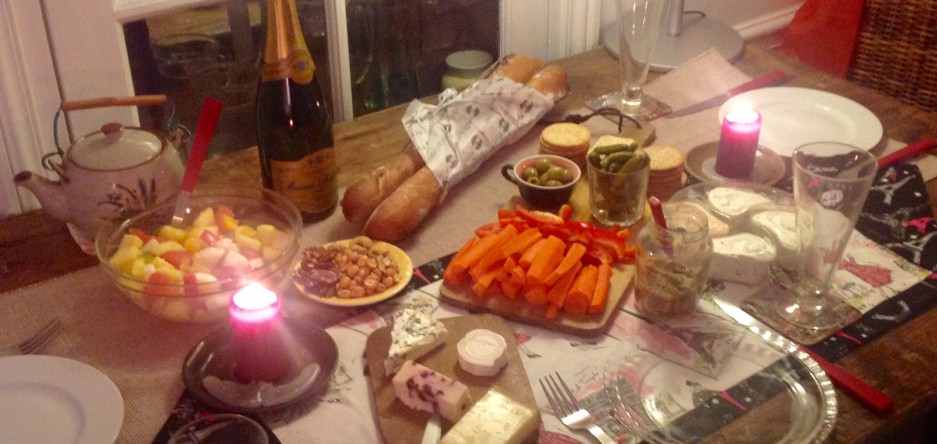One of the most interesting models I came across was a semi-rural church of less than 50 members struggling to remain vibrant and relevant in a town in the throes of significant economic decline. In addition to the hundreds of thousands of dollars needed to maintain its 500-seat building, this small congregation sat squarely in the middle of a town with an increasing need for food ministries across the local population, most especially among the elderly and developmentally disabled. The church had a large institutional kitchen and dining capacity for 250, but, by themselves, they did not have the human or financial capital to begin and sustain a food ministry. So the church successfully partnered in plurality with others across the county- a local college, the Girl and Boy Scouts, the local home for disabled adults, and other churches (to name a few), today providing a community-wide free and shared meal twice a month supported by donations and grant monies, and directed by part-time paid personnel who are not church members. It has become quite a social scene. Meals are cooked by a chef, people get a plate of hot, home-cooked food served through the kitchen window. They eat together around beautifully set tables. Beverages and dessert are served by volunteers who also eat after everyone else is served. At the meal I attended, the mood was buoyant-people had come to eat, but, perhaps even more importantly, they had come to be together for an hour. In informal conversation, diners shared how much they look forward to getting out for this meal, for the companionship, hot food, and warm welcome it entails. They remarked that it was like eating a meal with a big family. And, the food was exceptionally good-nothing “institutional” about it.
But, by definition, this was not a shared meal as Christian practice where people eat around the table together in God’s presence giving voice and assent to that presence. This is because the plurality of the partnerships essential for the program to survive also necessitated that all faith-based activity, including grace before the meal and a sharing of the gospel were unacceptable to most of the sponsors. So, it is a meal that is shared by the community in a beautiful old church building where explicit references to the coming kingdom of God are muzzled, and the church members can only hope that coming to the church for a meal will encourage more people to investigate the church itself. An organizer, who is also a Christian but not a member of any church, said that religion is off the table at the meals because,
“I don’t want to exclude anybody. I don’t want the conflict. And it hurts me to do that, but I’ve seen it before. I have to pick sides. There’s people who told me, this is the first time they have been inside of a church. Could that be a start?”
Another interesting phenomenon at this church is that most of the church’s members do not really participate – they don’t support the program as volunteers, they don’t come to share the meal, and they are somewhat threatened that “outsiders” are using “their” church. One significant reason is that they are elderly themselves. But, the real threat is that the church membership has dwindled from 500 to 50 since its heyday in the 1960’s. It is easy to see how these elderly members conflate the two issues in their minds- that their own congregation faces extinction, and that the hospitality of a warm and sincere welcome to the “other,” including the developmentally disabled, the poor, and the non-Christian elderly, always has an element of “stranger danger”. They would very much like to grow their membership, but not necessarily if it threatens the church’s historical way of life.
Sadly, it is not uncommon for members in established churches to oppose opening the door to people considered undesirable in the world’s eyes. Such hospitality is viewed as a threat to the shared history and family-like “feel” within the congregation. The assumption is that needy outsiders will never be able to contribute to the larger community, a belief sown in our human refusal to recognize the dignity and worth of all people made in the image of God. But, as Christine Pohl graciously reminds us,
“[People] not valued by the larger community are essentially invisible to it. Hospitality can begin a journey toward visibility and respect… Deep sensitivity to the suffering of those in need comes from our ability to put ourselves in their position, and from remembering our own experiences of vulnerability and dependence… If, when we open the door, we are oriented toward seeing Jesus in the guest, then we welcome that person with some sense that God is already at work in his or her life.”[1]
It is difficult for many of us to even think of sharing a common meal with people on the other side of our doors, people with whom we can’t conceive of sharing the Lord’s supper, people that we, if we are honest, don’t want around our children. We must overcome our fears. If we truly understand the depth of our own sin, the magnitude of God’s mercy in Christ, then we cannot help but become merciful to others. It is the way of the disciple outlined by Jesus in the Beatitudes. We don’t feed the needy stranger out of our own moral superiority, but out of our poverty of spirit. It is our own bottomless neediness for God that should drive our desire to share His kingdom with the stranger.
In post 54, we will begin looking at some of the shared meal practices of the inner city churches I interviewed. Stay tuned!
~J.A.P. Walton, Ph.D.
[1] Pohl, C. Making Room, 1999. pp 62, 65, 68

